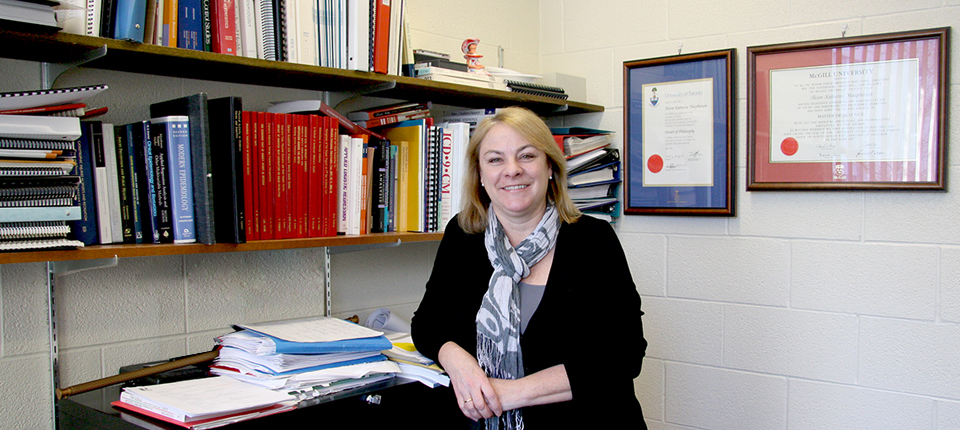How do we keep kids healthy, active and safe?
Alison Macpherson researches ways to help kids stay active and safe, whether playing on the hockey rink, walking to school, or riding in the backseat of a car. Research done by Macpherson and her team influenced Hockey Canada’s recent decision to change the age at which body checking is introduced, moving it from PeeWee to Bantam. Her expertise on injury prevention is helping to shape child safety policy in Canada.
Inspiration
I’m inspired by my own children and a desire for them to grow up safe, active, and healthy. But I find that injury prevention often gets forgotten when we talk about healthy child development.
I think seatbelt laws are a fantastic example of the importance of safety policies. There was opposition to seatbelt laws when they first came out, but now 98% of Canadians wear their seatbelts. The death rate from injuries in Canada took a sharp downward turn after people started using seatbelts. They really do save lives.
Impact
There’s this idea that researchers sit in their “ivory tower” at the university and publish papers in scientific journals that never go anywhere. In injury prevention, that’s just not good enough.
We are working on a study that will ask policy makers across the country about certain evidence-based injury-prevention policies: bicycle helmet legislation, booster seat laws, ATV legislation. We are trying to get a better understanding of the barriers and situations in each province, with the goal of harmonizing policies across the country to enable more people, and especially children, to stay safe.
I work within a very multidisciplinary team. The injury-prevention organization Parachute has partnered with our research team from the very beginning, helping us define our research questions and helping make sure that our findings reach their intended audience. This collaboration is essential if our research is going to make a difference. Injury is the leading cause of death in childhood and up to age 44. There are so many things we could do with what we know now to keep kids safer.
Highlight
We’ve developed injury indicators for First Nations and Inuit children, because they face quite a different burden of injury. We’re working with one community near Cornwall called Akwesasne and they’ve developed a whole new way of reporting injuries in their schools. Our team helped them start, and now the community has taken over the project. In one case, the children were given cameras to tell a story about what they think is safe and unsafe. Several children took pictures of the same frayed carpet because they had tripped on it. The organization replaced the carpet. It sounds so simple, but the potential impact is large.
What’s next?
Our team is developing an online dashboard to depict injury trends in each province and across the country; between males and females, urban and rural, rates of drowning, death, hospitalization. We hope to give the provinces report cards on how they are doing in terms of childhood injury. This approach has worked well in Europe, where the European Child Safety Alliance succeeded in sparking change on things like child restraint legislation and consumer product safety laws. We are hoping to do something similar across Canada.


